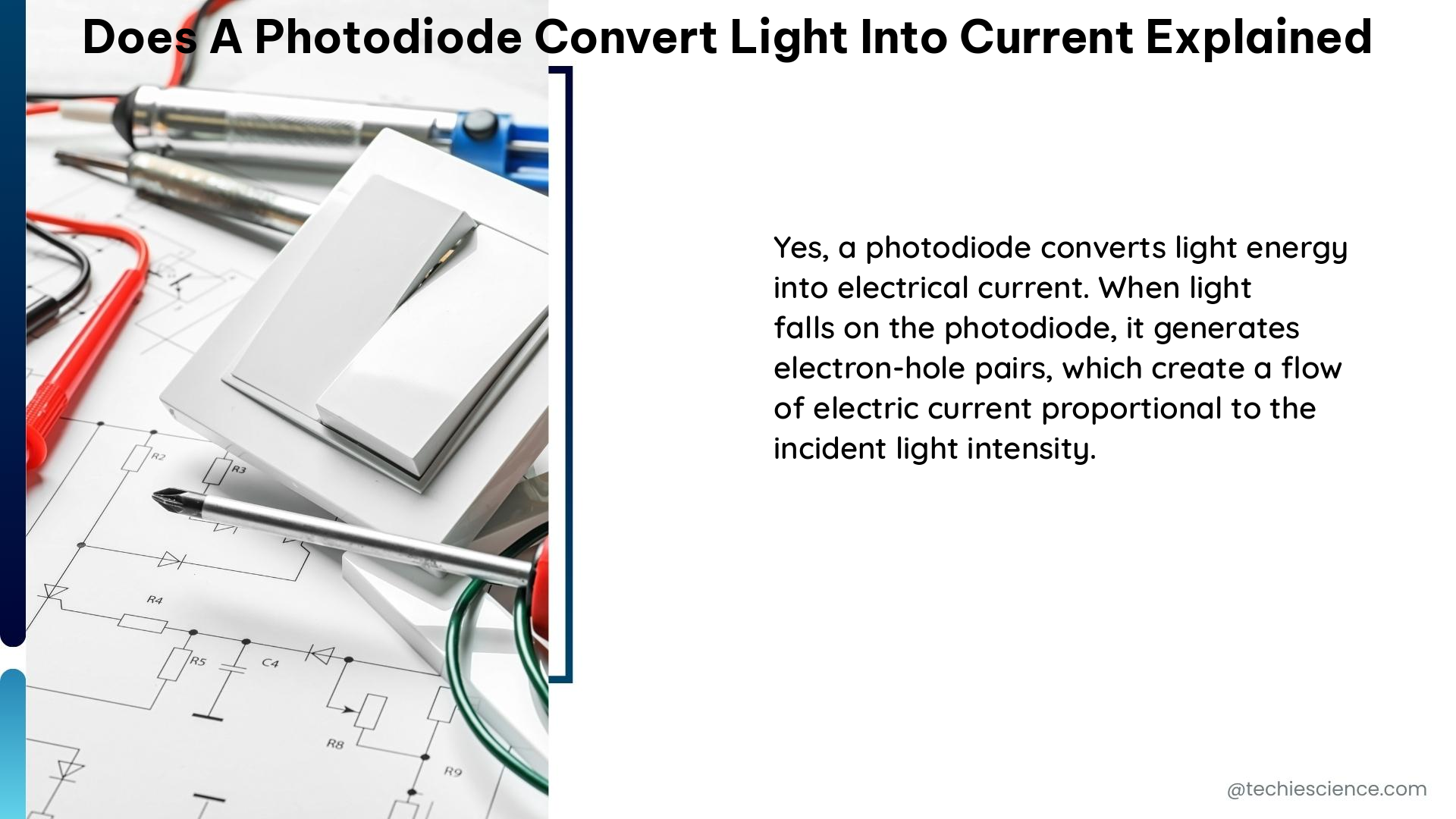A photodiode is a semiconductor device that converts light into electrical current. When photons hit the photodiode, they can be absorbed and excite electron-hole pairs. These electron-hole pairs move within the photodiode, ultimately generating a current. The external quantum efficiency (EQE) measures how many incident photons are successfully converted into a current signal. A higher EQE indicates that the photodiode can more effectively convert light signals and has better photoresponsivity.
Understanding Photodiode Operation
The operation of a photodiode is achieved through the process of absorbing light and converting the changes in light into changes in reverse current. The external quantum efficiency (EQE) is an indicator of the sensitivity of a photodiode to incident light.
Measuring EQE
Testing EQE can determine the photoresponse performance of the photodiode at different wavelengths. The methods for testing EQE include:
- Using standard light sources and spectrometers to measure input light intensity.
- Measuring the output current of the photodiode.
- Calculating the EQE using the formula:
EQE = (Output Current) / (Input Optical Power × Photon Energy)
The EQE is typically expressed as a percentage, with 100% indicating that every incident photon is converted into an electron-hole pair that contributes to the output current.
Importance of EQE
In many optical and optoelectronic applications, high light quantum efficiency is crucial, especially under low light intensity conditions. For example, in optical communication systems, solar cells, spectral measurement, and imaging applications, efficient light quantum efficiency is required to ensure the capture and detection of weak light signals. Therefore, when selecting and evaluating photodiodes, light quantum efficiency is an important performance parameter that should be considered based on specific application requirements.
Photodiode Characteristics

Linearity of Current and Light Intensity
The relationship between current and light intensity is approximately linear, which is illustrated in Figure 2. It shows the characteristic curves of the output current as a function of light intensity for a red (CLS15-22C/L213R/TR8), a green (CLS15-22C/L213G/TR8), and a blue photodiode (CLS15-22C/L213B/TR8). However, the relative sensitivities of the red, green, and blue diodes are different, so the gain of each stage must be determined separately through the feedback resistance RFB. For this, the short-circuit current (ISC) of each diode has to be taken from the data sheet and subsequently the sensitivity, S (pA/[lx]) can be calculated.
Dark Current
When a photodiode is not illuminated, the current passing through the photodiode is defined as dark current. Dark current includes multiple sources, including:
- Radiation current: Generated by radiative carriers due to temperature.
- Saturation current: Related to the characteristics of the semiconductor material.
In applications, especially when photodiodes are used for precise optical power measurements, the generation of dark current may cause measurement errors. Therefore, it is necessary to check and calibrate the dark current in advance to ensure the performance and accuracy of the photodiode. For certain applications, reducing dark current may require cooling the photodiode or selecting a photodiode type with low dark current.
Conclusion
In summary, a photodiode converts light into electrical current by absorbing photons and generating electron-hole pairs. The efficiency of this conversion is measured by the external quantum efficiency (EQE), which is an important performance parameter for many optical and optoelectronic applications. Dark current is the current flowing through a photodiode in the absence of light and can cause measurement errors in certain applications, so it is necessary to check and calibrate dark current in advance.
References:
1. Measuring Photodiode Light Intensity : r/AskElectronics – Reddit
2. Photodiode Circuit for measuring light intensity – Electronics Stack Exchange
3. Photodiode comprehensive analysis: from basics to applications – Enlighten Technology
4. Dark Current – Wavelength Electronics
5. How to Convert Light Intensity into an Electrical Quantity – Analog Devices

The lambdageeks.com Core SME Team is a group of experienced subject matter experts from diverse scientific and technical fields including Physics, Chemistry, Technology,Electronics & Electrical Engineering, Automotive, Mechanical Engineering. Our team collaborates to create high-quality, well-researched articles on a wide range of science and technology topics for the lambdageeks.com website.
All Our Senior SME are having more than 7 Years of experience in the respective fields . They are either Working Industry Professionals or assocaited With different Universities. Refer Our Authors Page to get to know About our Core SMEs.